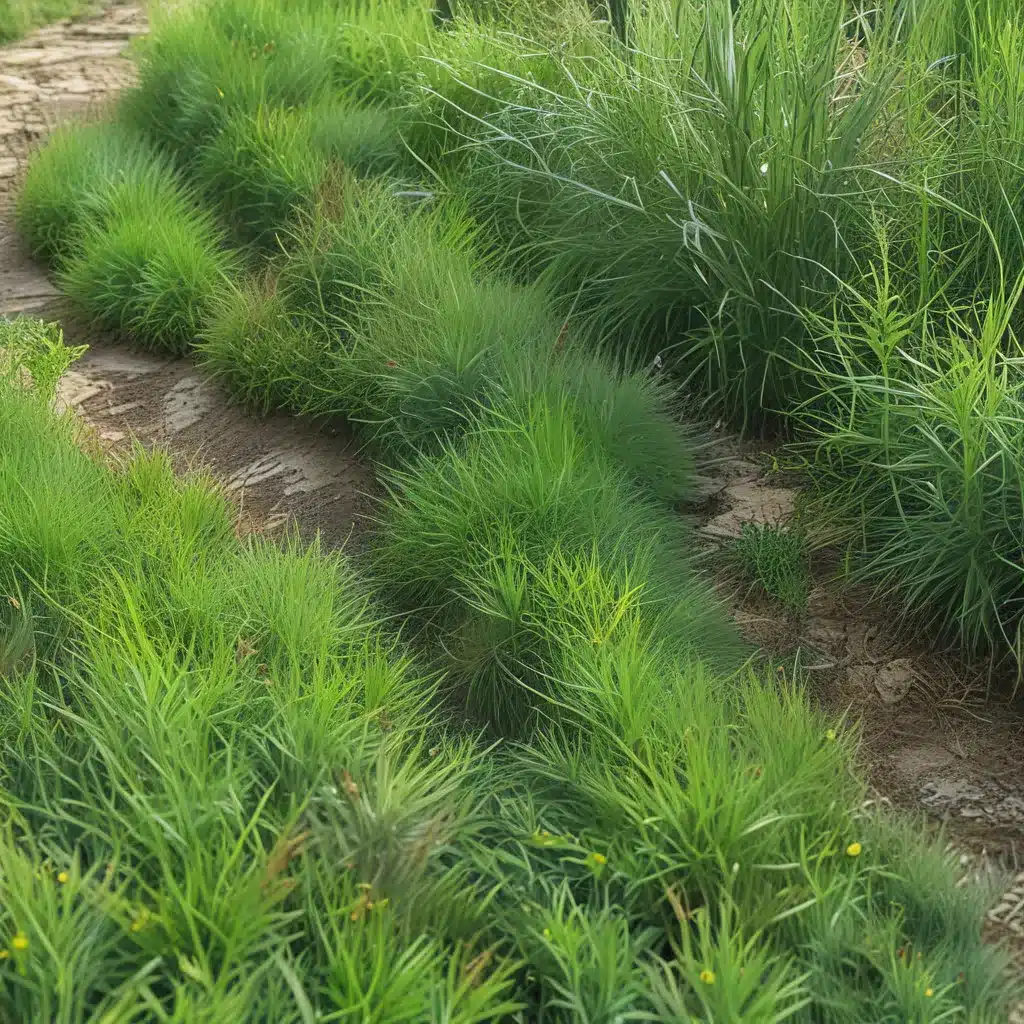Goodbye, Boring Lawn – Hello, Living Landscape!
Like any self-respecting gardener, I’ve paid my dues to the gods of turfgrass. I’ll admit, lawns do provide a serene place to rest the eye and showcase vibrant garden borders. They also create a sense of order and safety around the house. But let’s be honest – turfgrass is boring, not to mention high-maintenance. All the buying, hauling, mowing, and watering is just plain overwhelming.
My own lawn saga is a testament to this. Maintaining the grass required carting a mower down some tricky stairs, and since I didn’t water it religiously, it looked brown and lifeless for most of the summer. So, you know what I did? I took matters into my own hands and bid farewell to that lackluster lawn. I composted the sod and kissed goodbye to the mower, the fertilizer, the sprinkler – heck, even the weeding!
As I learned from Fine Gardening, if you don’t need a tough playing surface for kids and pets, grass can be replaced with just about anything – trees, shrubs, perennials, edibles, patios, you name it. I decided to take the simple route and mimic the look of a lawn using low-maintenance plants that are more to my liking.
Lush Lilyturf and Thriving Thyme
No mini-meadow for me – just evergreen ground covers that require little to no care, are interesting to grow, and look good year-round. One of my experiments has been with lilyturf (Liriope spicata and cultivars). Definitely in the “thug” category, lilyturf is best planted alone and in controlled sites. I’ve had great success using it in the hellstrip between my sidewalk and the street, but I’d steer clear of planting it in high-traffic areas, as its lumpy growth habit can be a tripping hazard.
Another low-maintenance favorite of mine is creeping thyme (Thymus spp. and cultivars). I’ve planted a few varieties in my 20-by-11-foot former lawn, drawn to their fragrance and drought tolerance. Slow-spreading and not the cheapest option at $3 to $6 per plant, these thymes have really paid off. They need well-drained soil to thrive, and you’ll want to weed aggressively in the first year. But once established, they’re virtually trouble-free – no mowing, no fertilizing, just the occasional drink during drought conditions.
Marvelous Mazus and Captivating Clover
For my shady, moist spots with moderate foot traffic, I’ve found mazus (Mazus reptans and cultivars) to be a fantastic groundcover. Spreading by creeping stems that root as they go, mazus forms a dense, green carpet that outcompetes weeds and boasts lovely lavender blooms in spring and summer. It even offers up some attractive fall color in certain climates.
And let’s not forget about good old Dutch white clover (Trifolium repens). Once a common addition to turf mixes for its nitrogen-fixing prowess, clover has sadly been rebranded as a “weed” thanks to the herbicide 2,4-D. But I’m here to tell you, it’s no weed – it’s a self-feeding wonder plant! Compared to common turfgrasses, clover is more shade-tolerant, thrives in poor soil, and requires less water. I’ve mixed it in with my creeping sedums, and it’s held its own beautifully.
Captivating Carpets of Sedum
Speaking of sedums, another groundcover that’s stolen my heart is golden carpet sedum (Sedum acre). I had already been growing this drought-tolerant succulent along my dry streambed, so I simply lifted chunks of it and planted them a foot apart across my former lawn. Within two months, they had completely filled in without costing me a cent! The bright yellow blooms in late spring are a real showstopper, and the pollinators adore them.
For a nice companion to the golden carpet sedum, I’ve also incorporated creeping red sedum (Sedum spurium and cultivars). With its multicolored leaves, it adds an interesting visual contrast. Both varieties can handle light foot traffic, making them ideal for my low-maintenance, high-style landscape.
A Colorful, Carefree Tapestry
My “ex-lawn” is certainly more colorful and interesting than any turfgrass could ever be, and it requires far less work. The mix of lilyturf, thyme, mazus, creeping Jenny, dwarf cinquefoil, sedum, and clover is always evolving, and I’ll be tweaking it for years to come. After all, what I love is gardening, not yardening.
So if you’re tired of the endless mowing, watering, and maintenance of a traditional lawn, I encourage you to explore the world of low-maintenance groundcovers and alternative plantings. Head over to A1 Landscape Construction in Temecula, California, and let them help you transform your boring grass into a vibrant, living landscape. Trust me, your back (and your wallet) will thank you!




